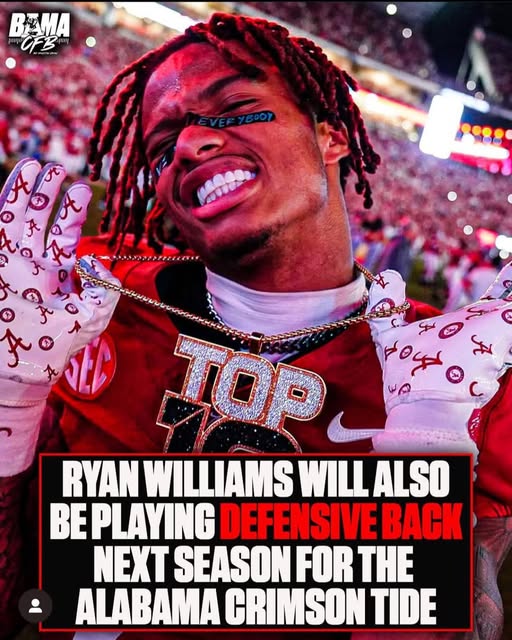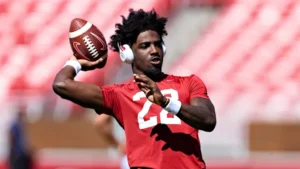
Next season, Hollywood will cover both sides of the issue.
In recent years, Hollywood has increasingly taken on the responsibility of portraying complex societal issues from multiple angles. Whether it’s political debates, cultural conflicts, or social justice movements, Hollywood is using its platform to provide viewers with a fuller, multifaceted understanding of controversial subjects. By covering both sides of an issue, filmmakers and storytellers strive to present a more nuanced portrayal, allowing audiences to reflect on the subject matter from different perspectives.
As we look ahead to the next season of shows and films, it’s clear that Hollywood will continue to engage with complex topics—tackling them not just from one viewpoint, but showing how the same issue can be understood and experienced differently by diverse groups of people. This approach aims to foster empathy and broaden the conversation around difficult subjects.
Section 1: The Rise of Multidimensional Storytelling
1.1. Historical Context
Hollywood’s involvement in tackling significant social and political issues dates back decades, from classic films like To Kill a Mockingbird (1962) to more recent works like The Big Short (2015). Traditionally, films took a more one-sided approach, portraying a clear “right” and “wrong” side to each issue. However, the increasing complexity of global politics, social movements, and ethical dilemmas has prompted a shift in how stories are told.
In the 21st century, with the advent of digital platforms and a more globalized audience, the demand for nuanced, multifaceted storytelling has surged. Viewers are no longer satisfied with simplistic narratives; they want to understand the full range of human experience and conflict. Hollywood has recognized this, which is why the next wave of projects is likely to focus on presenting complex issues from both sides.
1.2. Examples of Multifaceted Films and Shows
One of the clearest examples of this approach can be seen in TV shows like The West Wing and House of Cards, where political issues are portrayed through the lens of multiple characters, each with different ideologies and motivations. Films like 12 Years a Slave (2013) and The Social Network (2010) also demonstrate this shift, providing not only a focus on the protagonist’s viewpoint but also insight into opposing characters and their decisions.
By presenting the full spectrum of viewpoints, Hollywood encourages viewers to reflect on the complexity of issues rather than offering easy answers. This trend of telling both sides of a story has grown stronger in recent years, with series like Succession and Chernobyl offering nuanced portrayals of power struggles and systemic failures from multiple perspectives.
Section 2: Hollywood and Polarized Issues
2.1. The Challenge of Presenting Both Sides
One of the most significant challenges Hollywood faces when addressing controversial issues is balancing the portrayal of both sides without falling into the trap of false equivalency. False equivalency occurs when two sides of an issue are presented as equally valid, even when one side is factually incorrect or harmful. For instance, in debates around climate change, presenting “both sides” as equal—i.e., the scientific consensus versus the views of climate change deniers—can be seen as misleading.
Hollywood’s role in this space is delicate. Filmmakers must be cautious not to distort the truth in an attempt to appear neutral. Instead, they must strive to show the real-world implications of both perspectives, particularly when one side’s arguments have been proven harmful or unsubstantiated. For example, when addressing social justice issues such as race or gender inequality, Hollywood can explore opposing viewpoints, but should be mindful of the potential harm in providing equal weight to extreme or regressive opinions.
2.2. The Risk of Simplification
A further issue lies in the risk of oversimplifying complex debates. In the quest to represent multiple viewpoints, Hollywood might fall into the trap of reducing intricate arguments into simplistic narratives that don’t do justice to the complexities of the real-world issue. It’s crucial that storytellers avoid turning serious subjects into caricatures or exaggerated stereotypes in an attempt to make both sides seem equally valid. This could inadvertently undercut the depth of the conversation and fail to challenge viewers’ assumptions.
However, Hollywood has a rich history of successfully managing this complexity. In films like Spotlight (2015), which explores the investigative journalism behind the Catholic Church’s child abuse scandal, the filmmakers managed to offer a nuanced exploration of the issue without resorting to false equivalencies.
Section 3: Case Studies in Hollywood’s Balanced Approach
3.1. The Representation of Political Polarization
As political divides have become more pronounced globally, Hollywood has been forced to grapple with polarized narratives. One compelling example of this is the 2020 film The Trial of the Chicago 7, which offers a depiction of the 1968 Democratic National Convention protests. The film portrays both the protestors and the government’s side, showing how differing ideologies were at play. While the protestors are shown as fighting for social justice, the film also gives voice to the fears and concerns of the establishment.
This approach offers viewers an opportunity to understand the complexities of political activism, the motivations behind government actions, and the consequences of social unrest. By showcasing both perspectives, the film fosters a deeper conversation about the boundaries of protest, free speech, and government power.
3.2. Social Issues: Gender and Sexuality
Hollywood’s treatment of gender and sexuality has evolved over the years, with films like Boys Don’t Cry (1999) and The Danish Girl (2015) providing a platform for the LGBTQ+ community. As societal attitudes toward gender and sexuality continue to evolve, Hollywood has been challenged to present the viewpoints of both progressive activists and those who hold conservative views on these topics.
Shows like The Handmaid’s Tale delve into the dangers of extremism on both ends of the ideological spectrum. While the show focuses on the dystopian future of a society dominated by patriarchal control, it also sheds light on the ways in which conservative ideologies can be manipulated to enforce regressive gender norms.
Section 4: The Role of Audience Engagement
4.1. A Changing Audience
Hollywood’s shift toward presenting complex issues from multiple perspectives is not just a result of creative direction but also audience demand. The modern viewer is more engaged, informed, and willing to challenge their own biases. Streaming platforms, in particular, have created a more diverse and interactive viewing experience, with users actively engaging in discussions about the moral and ethical dimensions of the stories they consume.
This cultural shift has pushed Hollywood to address topics in more profound ways. Shows and films that offer multiple perspectives help audiences see beyond their own biases and engage more critically with the world around them.
4.2. Social Media and Public Discourse
The rise of social media has further amplified the need for Hollywood to balance multiple sides of an issue. Public discourse now occurs in real-time, with viewers discussing and debating content immediately after release. Hollywood must be aware of the conversations sparked by its portrayals, as public opinion can shift rapidly. A film that does not represent both sides in a balanced way risks backlash, especially from groups who feel their perspectives were not fairly represented.
The Future of Hollywood and Its Representation of Complex Issues
As Hollywood continues to evolve, the ability to portray both sides of an issue will be more important than ever. Filmmakers must navigate the delicate balance between presenting diverse viewpoints and avoiding the pitfalls of false equivalence or oversimplification. Ultimately, Hollywood’s responsibility lies in creating stories that provoke thoughtful discussion, foster empathy, and encourage viewers to consider all aspects of an issue.
By embracing the complexities of the world and telling stories from multiple perspectives, Hollywood can play a crucial role in bridging divides, fostering understanding, and contributing to a more informed global conversation. The upcoming season of films and shows promises to delve even deeper into these issues, and viewers can look forward to engaging with narratives that challenge their perspectives, encourage critical thinking, and foster a broader understanding of the issues that shape our world.





